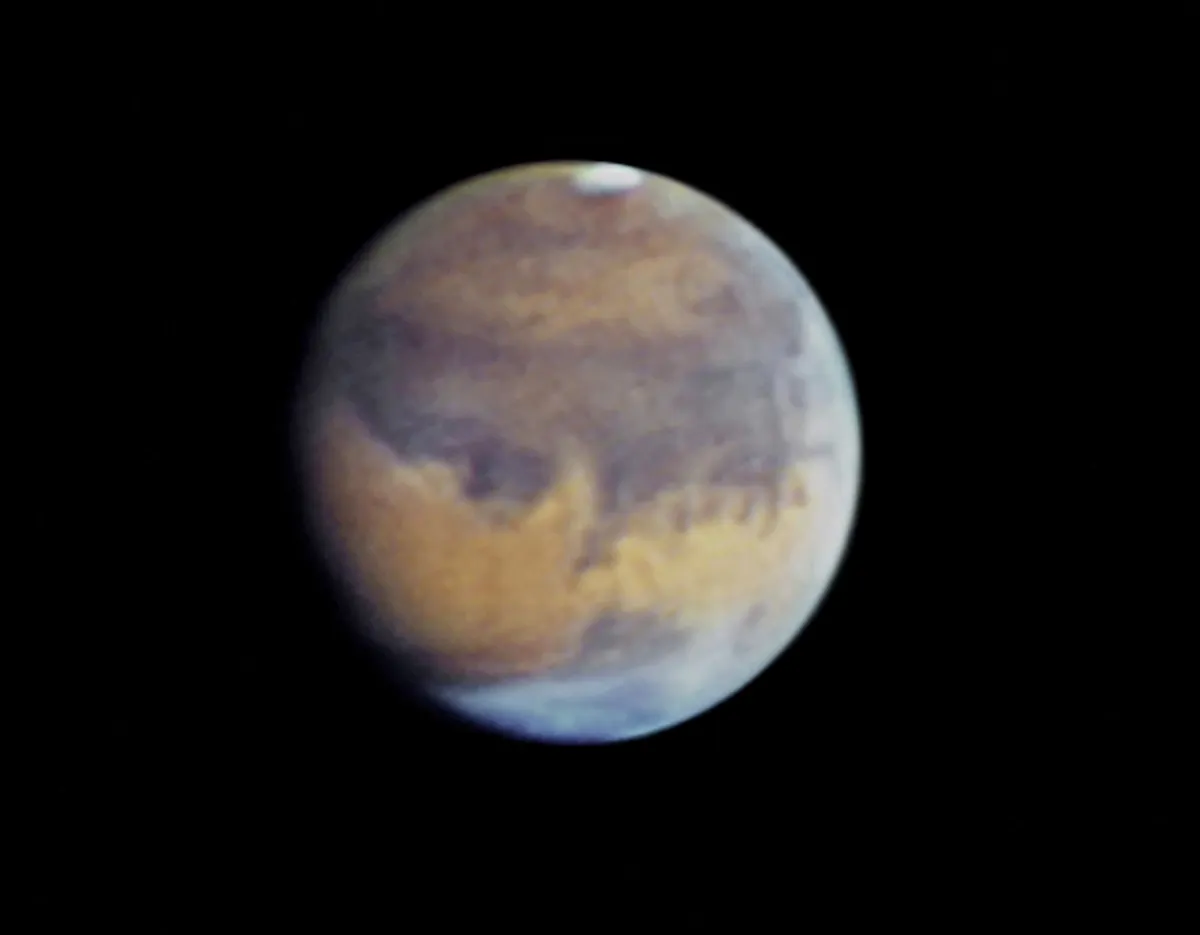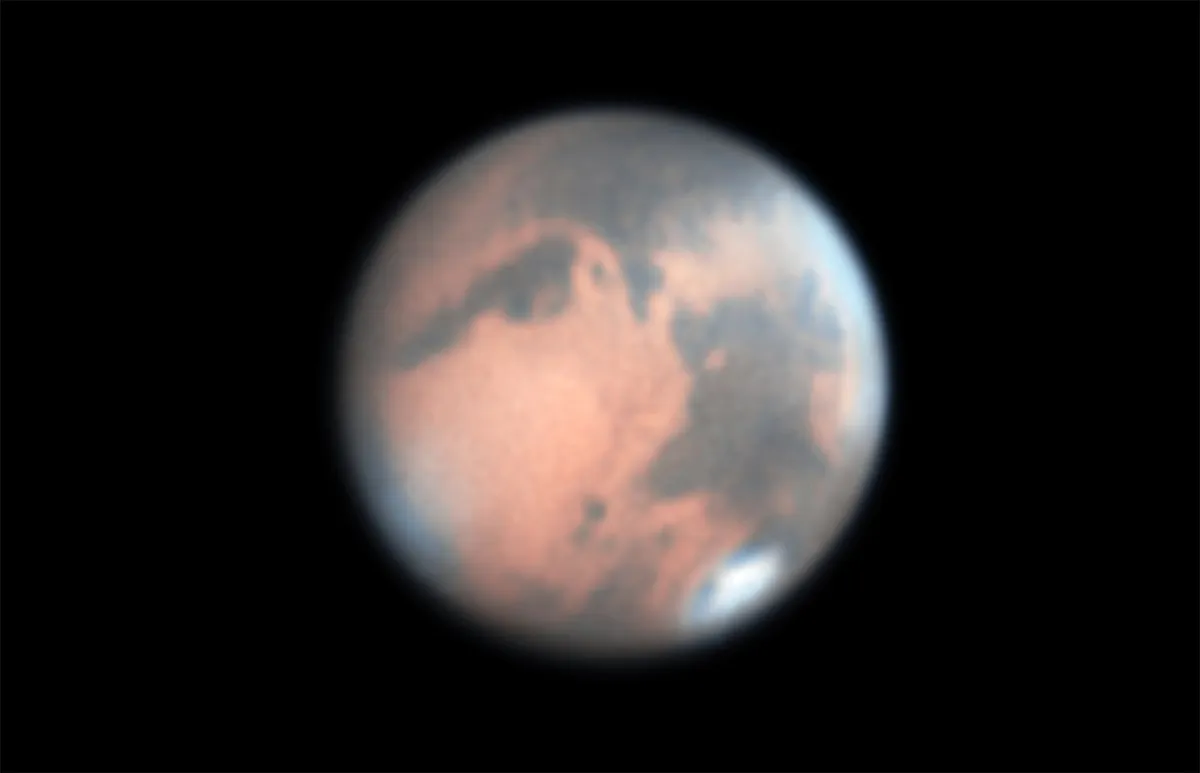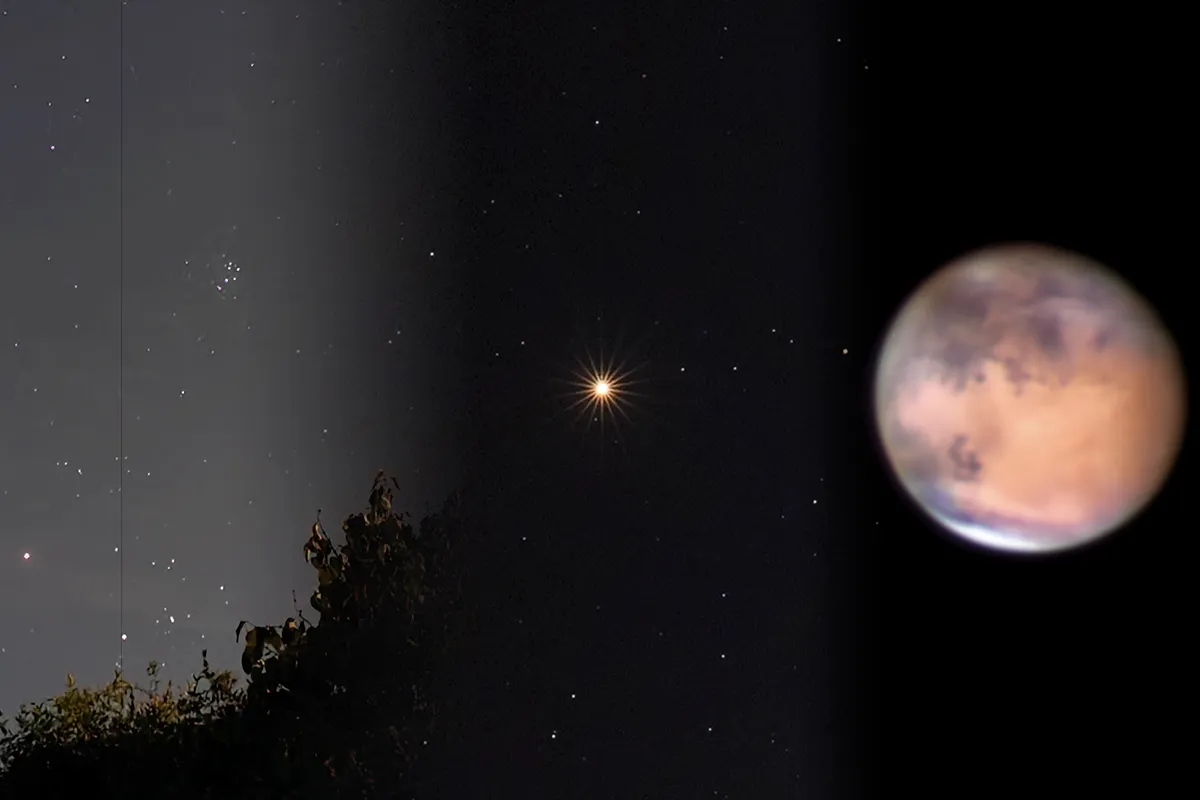Mars reaches opposition on 19 February 2027, marking the best time to observe the Red Planet.
It was last at opposition on 16 January 2025 and, before that, on 8 December 2022.
After the February 2027 opposition, Mars will then be at opposition again on 25 March 2029.
Get weekly stargazing advice and lunar phases every week by signing up to the BBC Sky at Night Magazine e-newsletter.

Seeing Mars through the eyepiece is always an unforgettable experience – whether it’s the first time or you’re revisiting an old friend.
When conditions are right during Mars opposition and you get a clear view, it’s almost as if you can reach out and touch the planet on the other side of the telescope.
Planetary observing can throw up challenges of course.

We are at the mercy of a number of conditions when it comes to observing Mars and a few things affect what we can see:
- Distortions from Earth’s atmosphere
- Brightness of the planet’s disc
- Its proximity to the horizon
- Mars's own weather
One of the best times to observe Mars is when it is at opposition, and in this guide we'll reveal what that means, and how to make the most of it.
Seeing Mars at its best and brightest

Oppositions are exciting opportunities to see planets in a whole new light.
Opposition occurs when a planet lies directly opposite the Sun, while Earth is nestled in between.
During opposition season, the full disc of Mars is illuminated by the Sun, granting us the best, most complete surface views.
Mars can be a fickle planet to capture, its appearance changing drastically depending on its proximity, position and brightness.
Not all Mars oppositions are the same

Mars opposition occurs roughly every 26 months and are a great chance to catch this challenging planet’s complex beauty. Not all oppositions are equal, however.
Both Mars’s and Earth’s orbits are elliptical, and each is gently affected by the gravitational pull of other planets, meaning that oppositions don’t always take place when Mars is as its closest point to us.
So-called ‘perihelic oppositions’ – ones where Mars is extremely close to us – only happen every 15–17 years or so.
Even then, some perihelic oppositions are exceptional.

For example, Mars opposition in 2003 occurred at the closest approach in almost 60,000 years, and won’t be beaten until 2287!
In short, any opposition is an opportunity you’ll want to take full advantage of.
The variations also affect the planet’s apparent magnitude and the angular diameter of its disc.
At its last opposition in December 2022, Mars reached 17.2 arcseconds at closest approach, but in 2020 it was 22.6.
At its next opposition in January 2025, Mars will only reach 14.6 arcseconds.
2022’s opposition won’t be beaten until 27 June 2033, when the planet’s apparent size increases to 22.1 arcseconds.
How to get the best view of Mars at opposition

Mars can be enjoyed through almost any telescope; even a short, small-aperture refractor reveals details on the red disc.
Adding a Barlow lens will increase the focal length and magnify the image, allowing you to pick up further details, including dark and light patches (known as albedo features).
But the ability to magnify is limited by seeing conditions: the greater the magnification, the more disruptive atmospheric turbulence is.
A (very) general rule of thumb for magnification is 20x to 30x per inch of aperture, although in reality it is very much down to the weather on the night.
Best telescope for observing Mars

A good-quality, longer-focal-length refractor could offer more surface detail, including some cloud structure or the polar caps.
It’s worth noting that refractors are likely to require high-powered eyepieces in addition to a Barlow lens to get detail, adding more glass, which can end up distorting views or adding chromatic aberration.
Newtonian reflectors offer longer focal lengths and allow us to get closer.
Catadioptric tubes, such as Schmidt- and Maksutov-Cassegrains, are longer still and allow the use of lower-powered eyepieces to achieve the same magnification.
Eyepieces and filters

Lower-power eyepieces are generally easier to view through and provide better eye relief over higher powers.
We suggest starting off with a low-powered eyepiece and stepping up to the point where views stop improving.
In all cases, coloured filters, which tend to screw into the base of an eyepiece, will help to boost surface contrasts.
An orange filter is a good start as it neutralises the orange disc, allowing dark regions to stand out.
For more advice, read our guide to telescope eyepieces and telescope filters.
What you'll see on Mars's surface

Mars captures our imagination because it appears almost Earth-like with its polar caps, distinct surface details and occasional clouds swarming above.
Its dusty composition, made up of iron and basalt, creates storms that cover the globe, obscuring its features for weeks.
Meanwhile, Mars’s rotation and axial tilt of around 25° means that throughout opposition season we can look forward to a variety of different views as the surface appears to shift slowly eastward.
Keep an eye out for the following disc features, tracking them up to and past opposition:
Polar ice caps

Mars has seasons much like we do, which affect the size and shape of its polar caps.
Sometimes its tilt means that only one is visible.
However, it might be possible to see both, depending on the opposition and seeing conditions.
Albedo features

Albedo features on Mars are for smaller scopes as well as more advanced setups.
Albedo refers to how much light is reflected from a surface: light and dark areas.
Mars’s dark patches are maria or seas, while the lighter areas are plains or continents, much like on our own planet.
Hellas impact crater

This massive, 2,300km-diameter circular basin – one of the largest in the Solar System – is located in Mars’s southern hemisphere.
It will appear as a bright reddish-orange patch.
Syrtis Major

The high plain of exposed volcanic rock known as Syrtis Major is the largest dark area visible on Mars’s disc.
Its V-shaped form should be obvious, but clouds can change the appearance of these darker surface areas, altering their colour or obscuring them.
Free programs such as Stellarium will help you plan your observing.
Simply set the date and time and zoom in on Mars to find out which surface features could be visible throughout the night.
Opposition is a great time to track and record your Mars observations, either in sketches or images. For more on the former, read our guide on how to draw Mars.
Viewing Mars around opposition

Don’t assume that the day of opposition should be the only date in your diary to view Mars.
The weeks around opposition will also be a particularly special time to catch the planet.
Taking time to view it during the week before and the week after opposition should not only allow you to see changes to the disc features, but will also train your eyes as you acclimatise to Mars’s surface.
It will also give you more chances for a prime viewing night as planetary observing very much depends on the atmospheric conditions here on Earth – and a clear night doesn’t always equate to good seeing.
Air humidity, damp, weather fronts and even the jet stream’s relative position to you will have a significant impact on your session.
If it’s poor one night, stick at it!
The next evening can be very different and provides a good opportunity to compare any extra details you might see as you get to know the surface.
Photographing Mars

Photograph Mars is as addictive as observing it. There are striking details to be resolved and plenty of widefield planetary imaging opportunities.
Look for a night with good seeing when the air is stable.
You won’t need the long exposures that nebulae require, so patchy clouds shouldn’t put you off.

Opposition season really means we want to capture serious surface detail, so dig out your tracking mount and longest-focal-length telescope.
DSLRs can still be used for planetary imaging as long as you can capture video.
Preferably you would use a planetary camera as these capture higher frame rates, cutting through an unsteady atmosphere and giving a sharper image.
If using a DSLR, you need a T-ring and adaptor that fits your telescope. Find out more in our guide on how to attach a DSLR to a telescope.
You may still need a Barlow lens to enlarge your image, because Mars will appear small.
Given the tiny field of view of planetary cameras, it's easier to locate Mars using an eyepiece, before popping the camera on.
Due to the rotation of Mars, limit videos to just a few minutes: 2–4 minutes for a planetary camera or 3–5 minutes for a DSLR.
There are free stacking and image processing software programs, including AutoStakkert! and RegiStax, which will convert video files into a single image.
For more advice, read our guide on how to photograph Mars at opposition.
If you observe or photograph Mars at opposition, get in touch by emailing contactus@skyatnightmagazine.com
This guide appeared in the December 2022 issue of BBC Sky at Night Magazine.

